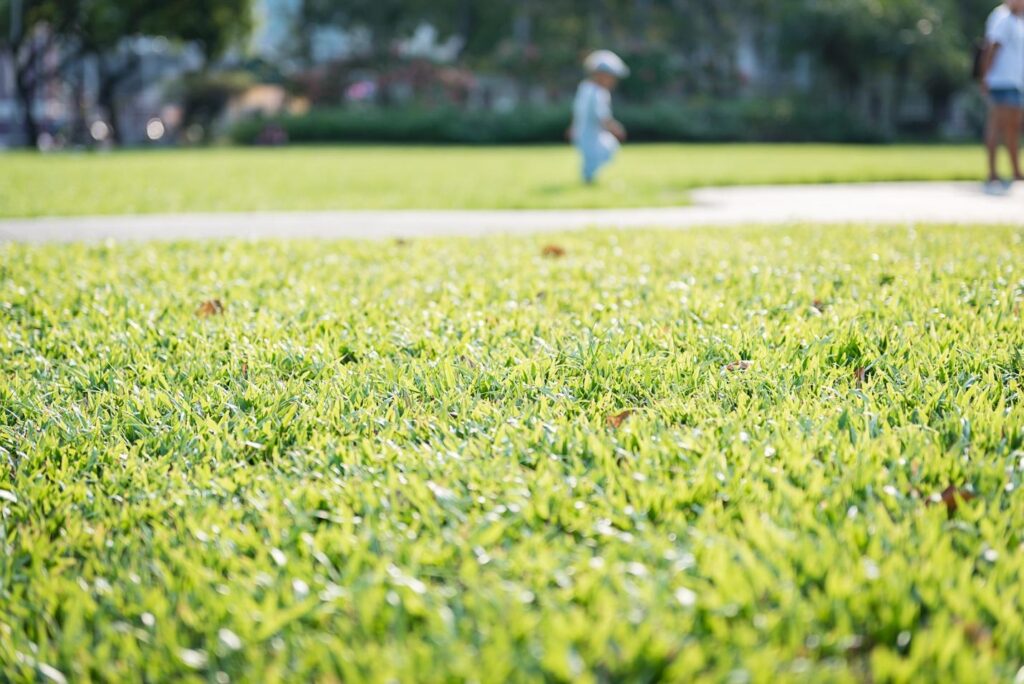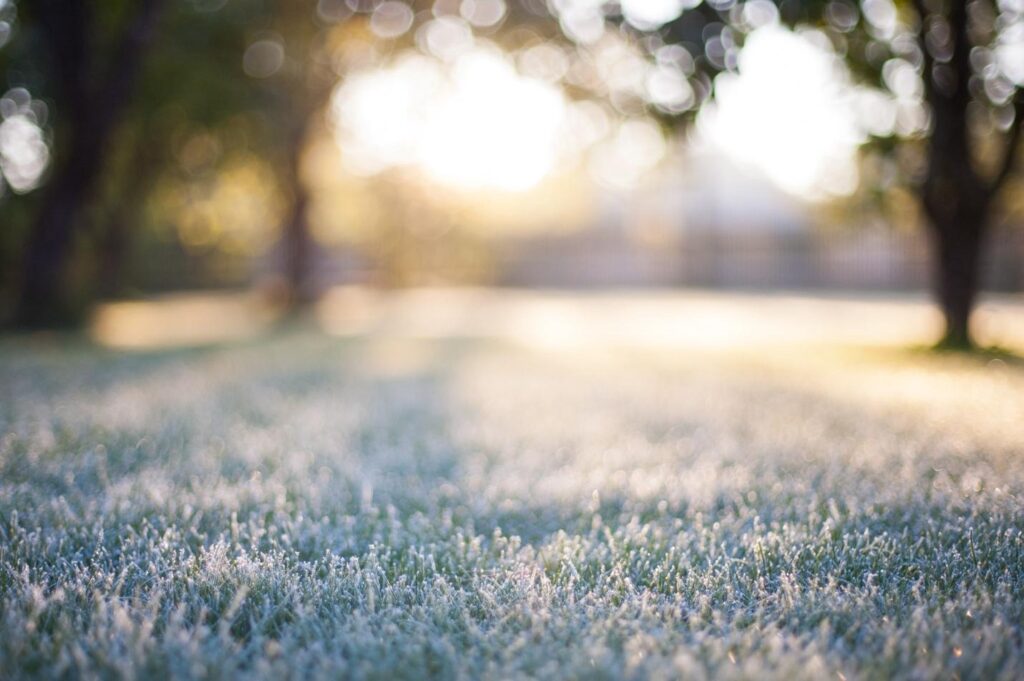Winter may feel mild along the Carolina coast, but your lawn still has some recovering to do once spring rolls in. Between rain, salt, and cooler soil temps, grass often comes back slower than expected. Giving it the right care early helps restore color, thickness, and health. With a few targeted steps, you can get your yard growing strong again. Lawn Squad® is here to help you revive your lawn after a long, mild coastal winter.
Coastal Winters Leave a Mark in Subtle Ways
Even if snow rarely sticks around long, your lawn still reacts to the cold. In Coastal Carolina, winter brings chilly nights, damp soil, and plenty of shifting temperatures. Grass may not be buried in ice, but it still slows down. What looks like a brown, brittle mess in early spring is usually dormant turf waiting for the right conditions to grow again.
This pause in growth can leave your yard looking flat and thin. That’s especially true after a few cold snaps or heavy rain that packs the soil. While the damage might not be dramatic, it adds up. Grass blades weaken, roots pull back, and color fades unevenly. A healthy recovery depends on how well you help the lawn transition from rest to growth. The sooner you start that shift, the easier it becomes to avoid issues later, like patchiness, stubborn weeds, or thin coverage when the sun gets stronger.
Milder Winters Still Lead to Soil Compaction
Even without heavy snow, your lawn’s soil can get compacted during the winter months. Cold rain and foot traffic both play a part. The surface gets tight and pressed down, especially in areas where kids or pets cut across the same path all season. Once the weather warms, compacted areas tend to stay soggy or stubbornly dry, depending on how the soil type reacts.
Coastal Carolina lawns often sit on a mix of sand and clay. That combination drains fast in some places and holds water in others. When the ground is pressed too firmly, roots don’t spread well, and water doesn’t soak in where it’s needed. Aeration helps reverse that. A technician uses special tools to open tiny holes across the yard. This makes room for air, moisture, and nutrients to reach the root zone. When the soil breathes again, the grass picks up speed, and the green color returns more evenly.
Dealing With Excess Moisture After Rainy Winters
Winter in coastal regions often brings more rain than snow, and that extra moisture sticks around longer than you might think. Poor drainage, low spots, or heavy clay patches hold onto water and keep the grass from bouncing back. You might see yellowing blades or thin strips where the turf never dried out completely.
When water sits too long, it can also lead to fungal activity or moss buildup. These issues thrive in damp soil with low sunlight. If you’ve spotted soggy areas that haven’t dried out since late winter, it’s worth addressing them early. Addressing small dips, adjusting irrigation zones, or topdressing with sand can improve drainage and keep grass from suffocating. Bringing in a lawn care pro to check how your soil handles water might reveal patterns that explain those stubborn patchy spots.
Caring for Warm Season Grasses
In this region, warm-season turf varieties—like centipede, zoysia, or Bermuda—make up most residential lawns. These grasses thrive in heat but wait for steady warmth before kicking into gear. That means your lawn may look dormant even after the calendar flips to spring. Unlike cool-season grasses that wake up fast, these varieties take their time.
Trying to push growth too early with heavy fertilizer or aggressive mowing can do more harm than good. Instead, early spring care should focus on cleanup and soil prep. Clear out debris, rake away dead material, and check for winter damage. Once daytime temperatures consistently stay in the upper 60s to 70s, you’ll start to see real growth. That’s when overseeding and fertilizing make more sense for this climate. Until then, think of early spring as a reset phase and not a rush toward summer color.
Salt Spray and Wind Exposure Near the Coast
If you live close to the ocean, your lawn faces extra challenges from salty air and strong coastal winds. Even without storms, salt spray can settle on your grass during breezy days. That salt pulls moisture from the blades and leaves behind dry, brittle patches that don’t recover well on their own.
Wind adds to the problem by stripping away surface moisture and causing uneven growth. Areas near fences, driveways, or exposed corners may take longer to recover because they’re hit harder during the winter months. To help those sections bounce back, rinse the grass with clean water, and consider adding organic matter to boost root health. In extreme coastal zones, options like seashore paspalum or salt-tolerant Bermuda hybrids can offer better long-term resilience. It’s not about overhauling your whole lawn—it’s about knowing which sections take the most stress and giving them a little extra help.
Seasonal Shifts Mean Early Weeds
Weed seeds wait patiently in the soil all winter. As soon as the weather starts to settle, crabgrass, spurge, and clover begin to pop. If your grass wakes up slowly or comes in thin, those weeds take advantage of the empty space. You’ll often see them show up first in sunny spots or along the edges where the soil warms fastest.
The best defense is to apply pre-emergent weed control before the seeds have a chance to take hold. Timing matters—too early and the product won’t last long enough, too late and the weeds are already up. Your lawn care team can help you pick the right window based on soil temperatures. Pairing weed control with light feeding gives your turf a stronger start. When grass fills in thickly, there’s less room for weeds to creep in and less need to be treated later.
Overseeding Helps Beat Winter Stress
After a coastal winter, some parts of your lawn may need a little boost to fill back in. Adding new seed over your current lawn is a good way to thicken areas that look thin or bare without removing what’s already there. You’ll get the best results by choosing a seed that works well with your existing grass. If your yard is mostly centipede, stick with a variety that blends smoothly in both color and growth pattern.
Start by loosening the surface with a rake or light aeration. Then apply the seed evenly across the area, keeping the topsoil lightly damp for the next week or two. You don’t need to reseed the whole yard—just focus on patches that didn’t bounce back. Pay attention to areas near downspouts, footpaths, or any spots that collect leaves all winter. These tend to need the most help. Once the new grass starts coming in, regular watering and mowing at the right height will help it settle in and spread.
Think Ahead by Choosing a Seasonal Lawn Care Plan
Spring lawn care isn’t only about solving problems. It also gives you a chance to create a smoother, more manageable season ahead. With a yearly plan in place, you don’t have to guess what your grass needs or when to handle it. It usually includes aeration, seeding, fertilizer, and weed control spaced out across the growing months.
With a set schedule, you can build stronger roots, spot recurring trouble areas, and prevent small issues from becoming expensive problems. Some providers offer perks like priority scheduling, lower repair costs, or free check-ins between treatments. You also get the benefit of trained eyes on your lawn regularly. That matters when you’re trying to stay ahead of the weather, the weeds, and the long summer heat. A little consistency goes a long way when you’re dealing with grass that has its own rhythm and pace in a coastal climate.
Get Help With Your Weathered Lawn
Getting your lawn back on track after winter doesn’t have to be complicated. When you understand what coastal conditions leave behind, it’s easier to respond with the right fixes. If you’re ready to give your grass a solid start, call Lawn Squad® today.






